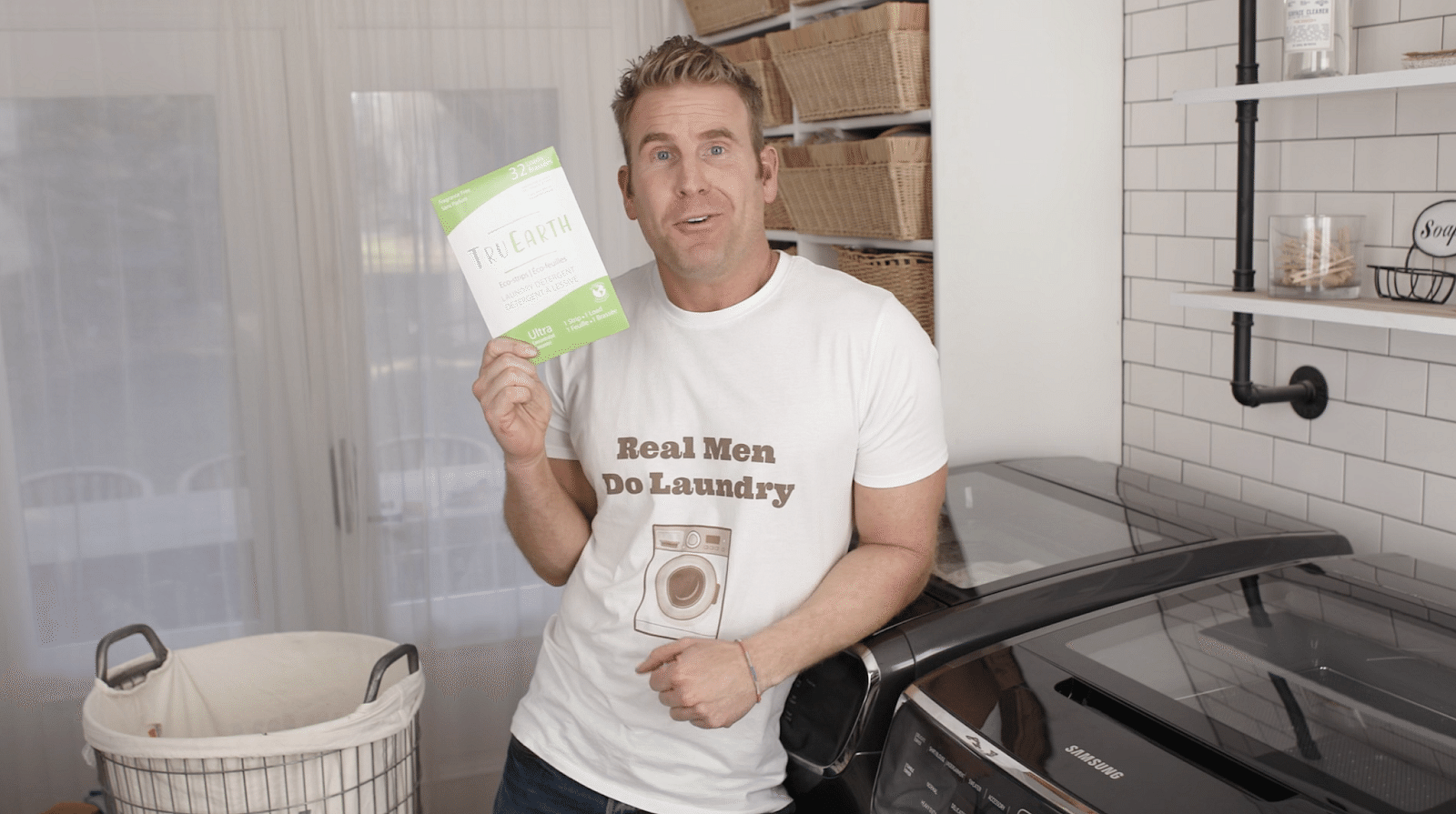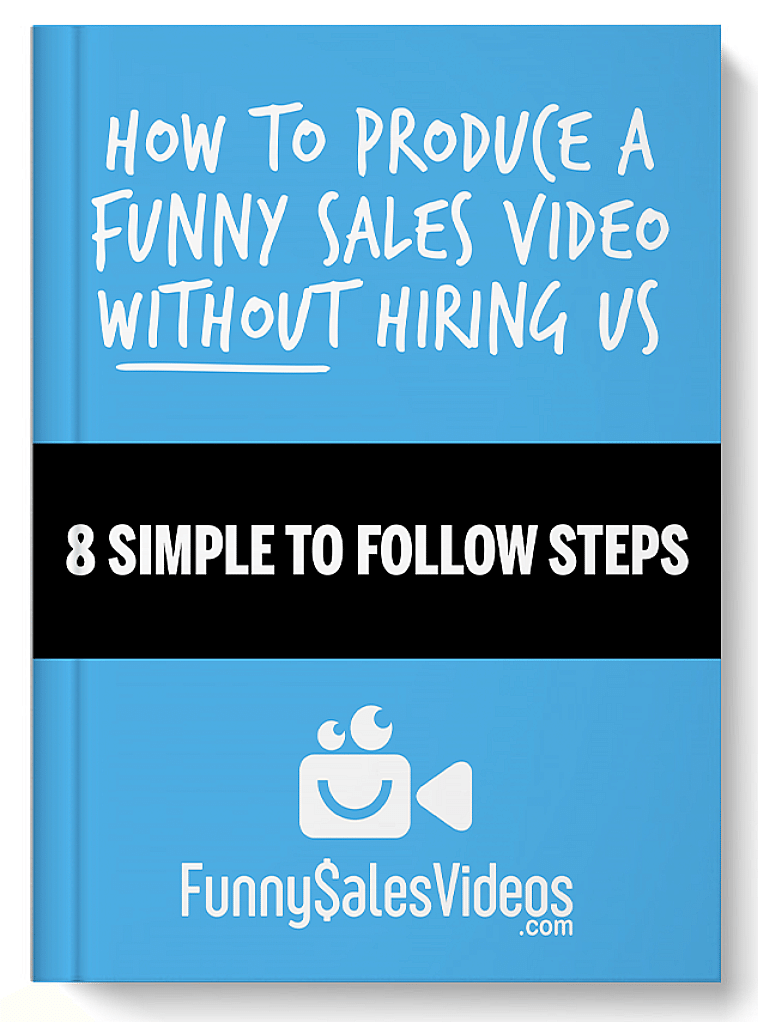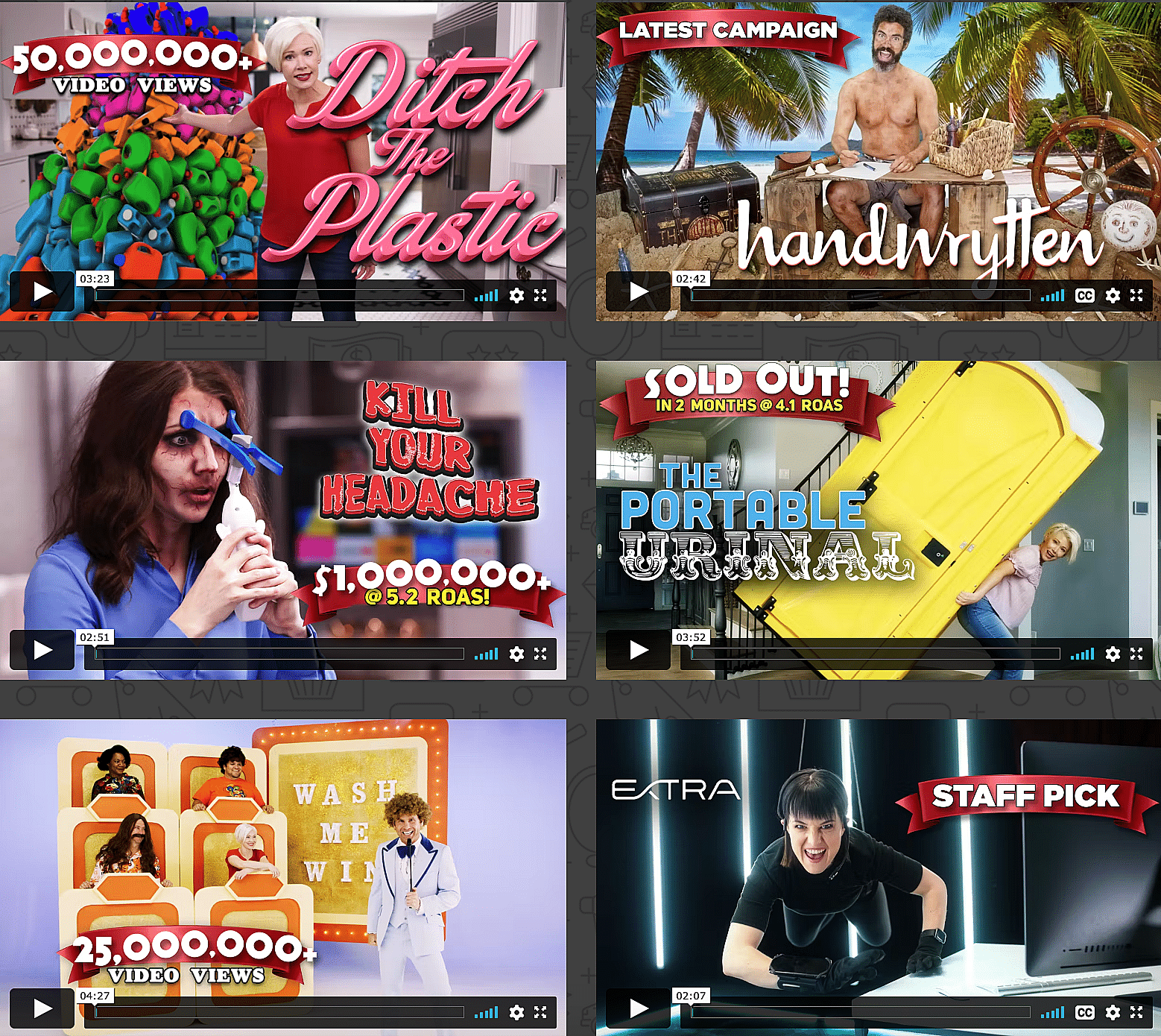
Do funny sales videos work? Joseph Wilkins breaks down how to use humour to get your business noticed
By Jim James, Founder EASTWEST PR and Host of The UnNoticed Entrepreneur.
In the new episode of The UnNoticed Entrepreneur, Joseph Wilkins joined me from Salt Lake City, Utah and talked about how creating videos can help entrepreneurs to get noticed.
Image from LinkedIn
How Funny Sales Videos Help
Joseph grew up in London and lived there for 20 years. Now, he’s running a marketing agency that uses the power of video to generate sales.
If you’re an entrepreneur and you’re not using video, you’re missing out. Today, video is being used on every platform that you can imagine; it connects you with people — whether to drive immediate sales, educate your audience, or simply introduce your brand.
In foregoing the opportunity that video gives, you’re letting your competitors gain the market share you are losing.
However, one thing that sets their agency, Funny Sales Videos, apart is that they specifically make funny videos. For instance, on their website, you can find a humorous video about a detergent product (which got me to heartily laugh and even buy the product).
Screengrab from Funny Sales Videos
Frankly speaking, many corporate-style videos end up being ignored. If you want your videos to be watched, you have to engage with people — but they don’t necessarily have to be funny.
Joseph compares marketing to a salad: You have to have all kinds of ingredients; not every single video should be funny because there’s a certain time and place for different types of video.
But after 15 years of producing television commercials, infomercials, and standard corporate videos, he realised that people tend to ignore the boring. For a top-of-the-funnel video or a first-impression video, they found that using humour is the best and most consistent way to not get ignored and for your audience to stop the scroll.
It’s not like how it used to be wherein people who watch TV shows would have to see your 30-second commercial spot. Today, you have to earn their interest and attention. You have to pique people’s curiosity and then tell them a story. Your first-impression video should be engaging, retaining, and ultimately relevant to advancing your story of how you can solve a problem that the viewer has. After that, your other videos don’t need to be nearly as entertaining because you’ve already got their attention. Instead, they should be educating and be more about furthering the buying cycle.
Joseph founded his agency about five years ago. And 20 years after running every kind of campaign that you can imagine, he can say that nothing is as effective as using humour.
Their recent campaign involved promoting the previously mentioned laundry detergent. Generally, it’s a fairly boring product but what their client offers, Tru Earth, is a different kind of laundry detergent and one with a mission (Their product is an eco-friendly detergent sheet). Now, their campaign has reached over 100 million views and helped generate millions of dollars in sales.
The 8-Step Process to Making Effective Videos
The more you think humour isn’t for your company, the more Joseph says it actually is.
If your company has humans as customers and humans have emotions — will there be customers who won’t like to smile or laugh? However, you don’t just have to be silly. You have to be relevant and be able to speak to the audience. If the video is for a C-suite executive, it should be more clever; the humour should have higher intelligence and, at the same time, be relatable to problems that that kind of person has.
Once you do your videos well, you can get your customers to laugh and smile. And there are several studies saying that if you successfully accomplish that, psychologically speaking, they will remember you and be prompted to buy your product or service, which they may not have seen or known before.
At Funny Sales Videos, they follow an eight-step process to create effective humour-injected videos (They actually made an ebook that you can download for free so you can learn each of these eight steps).
Screengrab from Funny Sales Videos
Typically, it takes them four months to produce videos for their clients. And the way they spend a lot of time on each step of their process is one reason why their campaigns are successful. These steps are:
-
Researching and understanding who your customer avatar is. You would never write a letter and only decide who is it for after you’ve written it. Unfortunately, in marketing, this is what’s often happening. Entrepreneurs tend to create videos or website copy and write only based on their thoughts. In their agency, they spend time researching their client’s customer avatar. They read their comments on the client’s or their competitors’ product reviews.
-
Brainstorming as many bad ideas as possible. Doing this helps take away the pressure. The more ideas you go through, the quicker you’ll come to the diamond in the rough.
-
Scripting. This involves two parts: scripting clients’ marketing copy points and then their story.
-
Bringing in the comedians to add humour. For this part, Joseph recommends bringing in professional freelancers. You can do mostly everything yourself but the writing and the acting have to be done by experts.
-
Producing. When talking about production, many people think of cameras, lights, and sounds. But another vital part of it is casting the right actor. Second to the product, the actor or the spokesperson of your video is the most important. Now, if you will be discouraged by the lack of equipment, you can rely even just on your smartphone to produce your video.
-
Editing. Comedy is all about timing and a really good editor understands timing. And if you’re thinking that people stop watching videos because they’re too long, it’s time to get that myth out of the way. People stop watching because they get bored, they’re not entertained, and what they’re watching is irrelevant to them. In your video, you have to cut out anything that would make people zone out. If there’s any critique in videos that their agency makes, it’s that their videos can be overwhelming. However, the way Joseph sees it, it means that the viewers are never getting bored.
-
Testing. In every video that they do, they create around 36 different versions to test different elements — from the opening hook and the offer to the length and format.
-
Forgetting going viral. What they’re doing isn’t about creating a funny video, uploading it on YouTube, and praying that it goes viral. Going viral isn’t something that you can predict, repeat, and use to build a business around. What their videos will do is that when they’re run as an advertisement, you can get double or triple returns against your ad spending. It’s like they’re building you a vending machine full of hundred-dollar bills and it will only cost you $20 to use that machine. So, for instance, if you promote your video on Facebook, you’d get much higher levels of return compared to the initial $20 that you invested. This shows that producing and promoting videos requires a business-minded approach, not a spray-and-pray one.
Screengrab from Funny Sales Videos
Regardless of whether you do every one of these steps perfectly or not, you will get better results than what you’re currently doing. This is why you should never be afraid that you can’t do videos similar to what they’re doing at Funny Sales Videos.
But if you want to do a campaign that gets a hundred million views and millions of dollars in sales, you have to do every step professionally. It depends on how much money you can afford to shell out. Because at the end of the day, it’s still money in, money out. If you’re not yet ready for a full-blown campaign, you can start by initially doing some of the aforementioned steps to improve on what you’re currently doing.
Joseph, however, emphasised that two of these steps shouldn’t be done on your own if you’re really serious about results. These are writing and acting.
When you’re bringing in professionals to do these, you don’t have to break the bank. In Utah, a good actor is going to charge about $1,000 to $1,500 a day and most of their videos are shot in only one to two days. For writers, you can outsource them via freelance sites such as Fiverr, Upwork, or in your local classified ads. There are many talented writers out there who work for reasonable rates.
If you pay for these two things — writing and acting — your video can already be doubled in quality.
Localising Humour
Humour simply doesn’t travel across cultures. For instance, there’s a documentary called “Exporting Raymond.” And it showed how Phil Rosenthal, creator of the hit sitcom “Everybody Loves Raymond,” needed to hire Russian writers to successfully adapt the show for Russian audiences.
If you want to translate your video to other languages, keep in mind that it requires completely different writing and acting. Never try to take a video and just put subtitles on it because it will never work except in some circumstances (e.g. Funny Sales Videos have created videos that worked for audiences in Canada, the US, and the UK).
If you want to hit the bullseye, hire local writers and actors. Because the concept may travel, but the execution of that concept has to be localised.
Image from Unsplash
To know the essence of good humour in a particular country, it’s important to start with research. You have to understand your customer avatar. And it’s not about age, income, or location — it’s about their behaviour and preference. What do they order at Starbucks? What music stations do they listen to? What journals do they read? Look into what defines your target demographic.
This is why in their agency, they spend time reading at least a hundred customer reviews so that they can understand the voice. They literally use lines from these reviews and put them in their videos.
For example, if they are to make a video about a protein shake and blender bottle product, they would go to Amazon and read a hundred reviews about it. This way, they’ll find out why people like it and which features they particularly like. If the product is a knockoff and offered by a startup and they don’t have a hundred customer reviews yet, what Joseph and his team would do is look at the reviews on their client’s competitors’ products. Because, essentially, the customers will be the same.
When they use lines from customers, they also don’t just focus on why people like a particular product. They also look for reasons why they don’t like the product and then state what makes the product that their client is offering different. If research and development are done right, it can really drive your marketing forward.
To make a video relatably funny, you should make sure that the writer who’s writing the script is at least in touch with the demographic of your customers. If you’re writing for older males, it will require a totally different bench of writers than what writing for younger females would need. This is where the beauty of online freelance marketplaces shines: Different writers are within your fingertips’ reach. You just have to test on your demographic.
Before a script is said to be final and goes into production, the folks at Funny Sales Videos test their scripts to make sure that people will be laughing at them. They do this through SurveyMonkey and by sending emails to customers. If the client has more budget, they can bring about 20 people into a focus group room equipped with a one-way mirror and see for themselves the people’s reactions. Either way, the point of this is to show that nothing is really funny unless your customer demographic says so. It’s important to test scripts first before you spend money to hire an actor.
Image from Unsplash
For their detergent video campaign, their customer avatar is a man at home doing the laundry. In the first video that they created for the same product, their primary demographic was a woman.
That video generated complaints and heated comments but, again, the whole point is to create engagement (However, there’s a fine line that you should draw because you have to be careful not to be offensive and affect the value of your brand). In comments sent by women viewers, they pointed out that though they loved the video, it was a little one-sided and stereotypical for the woman at home to be doing the laundry.
They took that into consideration and it’s what actually led to the second video where they left it all to the man. The aptly titled “Real Men Do Laundry” video hit home with that secondary demographic, widening the number of people that their clients can sell to.
Getting His Marketing Agency Noticed
No matter which industry you’re in, you have to create the best product and spend zero money on advertising — just like what Elon Musk is doing with the electric vehicles of Tesla. For Funny Sales Videos, Joseph follows the same approach. He and his team produce the best videos that people will talk about.
Another approach that he does is creating free no-holds-barred training wherein he tells exactly how he does things. He also gets invited to and attends podcasts and speaking engagements (In August, he will be at Oxford University to attend a video marketing conference where he will discuss how to use humour to increase sales).
If you’re a business owner and you want to get noticed, you have to primarily make a fantastic product. Then, figure out a way how you can teach people to do the same thing. Don’t hold back — share everything and be transparent because there will be more opportunities that will come back to you than anything that might you lose if your customers knew how to do things themselves.
To hear more from Joseph Wilkins, you can listen to his podcast, “How to Make a Video Go Viral.” To learn more about his agency, visit www.funnysalesvideos.com. On their website, you can download their free ebook and schedule a free brainstorming session with them.
This article is based on a transcript from my podcast The UnNoticed Entrepreneur, you can listen here.
Cover image by Count Chris on Unsplash







